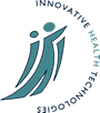Distributed Innovation Processes and the Uneven Growth of Medical Knowledge
Abstract
This project will identify the factors determining the uneven development and takeup of new medical knowledge within the fields of ophthalmology and cardiology. It will do so by means of a comparative and historical method that draws on the contributions of several disciplines including economics of innovation, the sociological study of innovation and the management of innovation in relation to medical technology. Our working conjecture is that answers are to be found in four principal areas: the uneven growth of background medical and scientific knowledge; the disparate way in which innovation systems are constructed, resourced and organized around the medical "problem" in different therapeutic areas and countries; the different perceptions of leading practitioners and medical communities as to what constitutes a soluble medical problem and a solution; and fourthly, the formal and informal processes of regulation that shape medical innovations and their diffusion. Thus the initial hypotheses are epistemic, organizational, cultural and institutional. Taken together these four elements determine the kinds of innovative experiments that arise within any medical system, the innovations that follow and the extent of their diffusion.
Summary
Background
In the last century, a wide variety of diseases have fallen within the scope of treatment, yet in the case of malaria and AIDS a comprehensive treatment remains elusive. Major advances have been made in the treatment of some cancers but clearly not all. Similarly in the case of ophthalmology the treatment of cataract and astigmatism has seen major advances while macular degeneration and glaucoma continue to be problem areas. And in the case of cardiology there have been major technological advances in the treatment of coronary artery disease while the pace of technological development in the management of heart failure has been relatively slow. This study seeks to address the nature of the apparently uneven growth of innovation and practice in medicine by comparing and contrasting certain developments in ophthalmology and cardiology.
Research Design
Our research design is necessarily comparative in that it seeks to understand why different areas of medical knowledge and practice advance at widely different rates over time and place. We propose to structure the study around the following comparators:
- Across two different medical areas, ophthalmology and cardiology;
- Across different innovation fields in the same medical area, e.g., between the treatment of cataracts and glaucoma within ophthalmology;
- Across the same innovation field in different national contexts with particular reference to the UK and US;
- Across different kinds of medical innovation within the same therapeutic complex, e.g., innovations in devices, in drugs, in instrumentation and in the practice of treatment
We will address these matters through a programme of structured interviews conducted with the major actors (both national and international) in the medical profession, the academic medical community, the medical supply industry, patient advocacy groups and health care managers and policy makers. This will be supported by secondary data collection from a wide range of sources.
Policy and Academic Implications
We expect that the differential processes of the construction of innovation systems play an important role in explaining the unevenness of medical innovation and it is the process of the birth, growth, stabilisation and indeed decline of specific innovation systems that we address in this project. From a policy perspective, understanding why innovations have been made in some fields and not in others may provide clues as to the means to advance know how more effectively. Is it the case that it is simply the result of a failure to invest sufficient resources, or inappropriate organisation or strategy? Is it that the problem is intrinsically difficult scientifically given standard modes of research, experimentation and problem solving and in which case is likely to remain so even if significantly more resources were made available?
Contacts
Outputs
Papers Accepted for Publication
Journals
Metcalfe, J. S., James, A. and A. Mina (2005), ‘Emergent Innovation Systems and the Delivery of Clinical Services: The Case of Intra-Ocular Lenses’, Research Policy 34(9): 1283-1304.
*Consoli, D (2006), ‘Services and Systemic Innovation: a cross-sectoral analysis’, Journal of Institutional Economics, forthcoming
*Mina, A., Ramlogan, R., Tampubolon, G. & J. S. Metcalfe (2006), `Mapping Evolutionary Trajectories: Applications to the Growth and Transformation of Medical Knowledge', Research Policy (accepted)
*Mina, A. (2006), ‘The Emergence and Evolution of Markets: Evidence from the Health Technology Sector, DIME Working Paper, forthcoming.
*Ramlogan, R., Mina, A., Tampubolon, G. and J. S. Metcalfe (2006), `Networks of Knowledge: The Distributed Nature of Medical Innovation', Scientometrics, forthcoming.
Book Chapters
Metcalfe, J.S., (2006), `Innovation Systems, Innovation Policy and Restless Capitalism', in F Malerba (ed), Proceedings of the Schumpeter Conference, 1994, Springer Verlag, Berlin (forthcoming)
Metcalfe, J.S. and J. Pickstone, (2006), `Replacing hips and lenses: surgery, industry and innovation in post war Britain ', in A Webster, (ed), Essays in Innovative Health Technologies, (provisional title, forthcoming), Macmillan, London .
*Mina, A. & Ramlogan, R. (2006), `Health Innovation Processes at the Public-Private Interface', in Windrum, P. and P. Koch (eds.), `Innovation in Public Services: Management, Creativity, and Entrepreneurship', Edward Elgar, Cheltenham, UK, forthcoming.
Under Review
*Consoli, D. and Ramlogan, R., (2006), `Out of Sight: Problem Sequences and Epistemic Boundaries of Medical Know-how on Glaucoma' under review, Journal of Evolutionary Economics.
*Tampubolon, G. and Ramlogan, R, (2006), `Networks and Temporality in the Development of a Radical Medical Treatment, under review, Graduate Journal of Social Sciences.
Others/in progress
McMeekin, A., (2005), ‘Medical progress, new diagnostics and the changing division of innovative labour’.
News
No News
